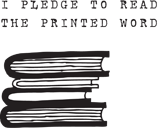Structure, creativity, and the brain
The human brain apparently integrates structure and creativity in much of what it does, the left hemisphere lending a hand to the work of the right hemisphere, and vice versa. In ancient Greek thought, apparently, the roles of structure and creativity were considered a bit more mutually exclusive. Let me introduce a quote with two brief, simplified definitions.
Lógos: For Greeks, encompassed reasoning and language
Mûthos: For Greeks, encompassed words, speech, stories, poems, fictions, and fables
"Recent neurological research indicates that, by and large, the hemispheres of the human brain have distinct functions [stay with me, it gets better]: in the left (for most people) is the proposenity for language, mathematics, and linear reasoning, in the right the propensity for visual, spatial, intuitive, and analogical skills, the hemispheres working together through their neural links. This discovery has prompted a re-examination of the roles and relationships of lógos and mûthos, suggesting that they may be partners rather than rivals. If this is so, creative thought may require both linear left and holistic right. In linguistic terms, logic is as likely in verse as in prose, and analogy and metaphor are as much the tools of philosophers and scientists as of bards and mystics." -The Oxford Companion to the English Language
For example, if I attempt to write a sonnet, the imposed structure forces me to be creative in solving the problems of tailoring topic and language. However, I think the point in the Oxford Companion might point to something more foundational, deeply rooted in the brain. In communicating a mystical fable, one must stick to grammatical norms, and the vision of the teller can inspire certain structural choices.











![Validate my Atom 1.0 feed [Valid Atom 1.0]](valid-atom.png)

No comments:
Post a Comment